TAJ WITH INDIAN WILDLIFE
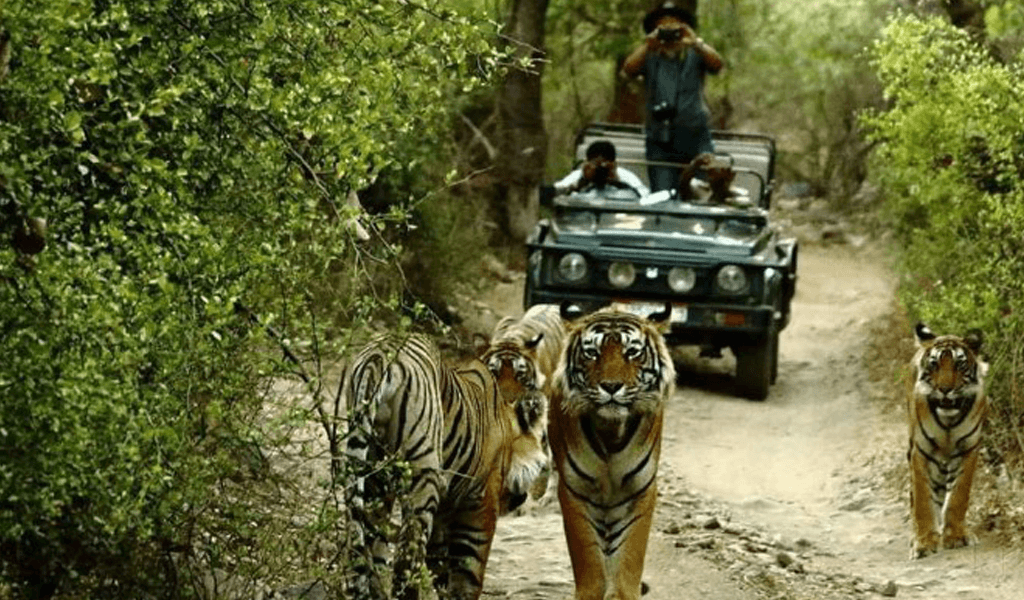
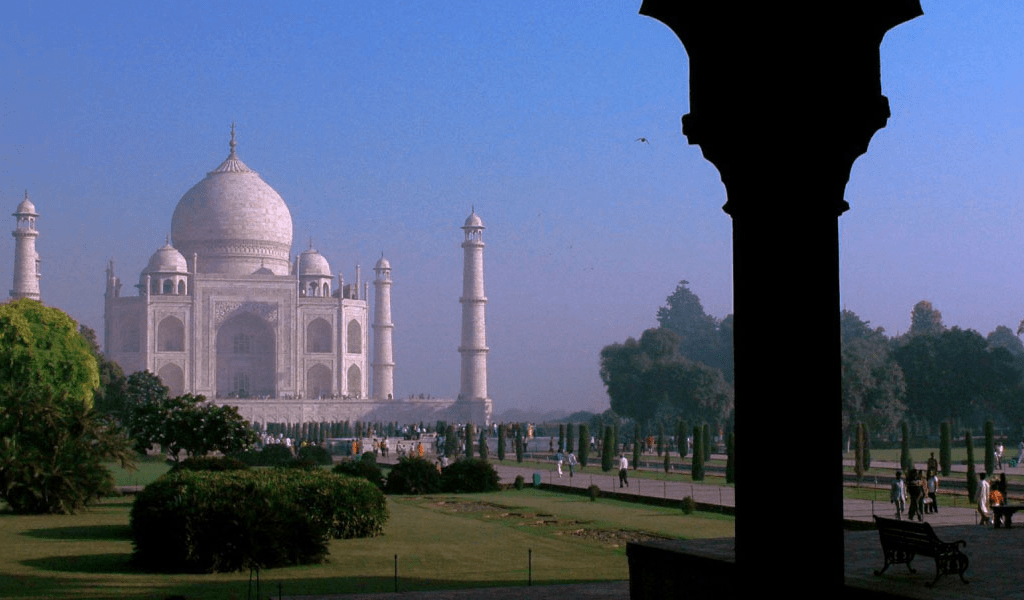
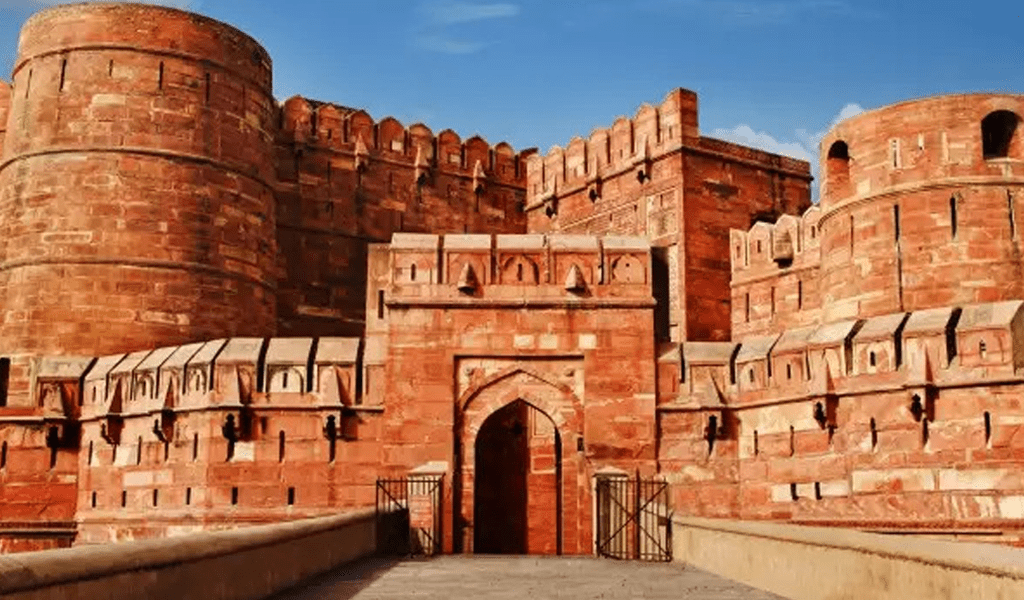
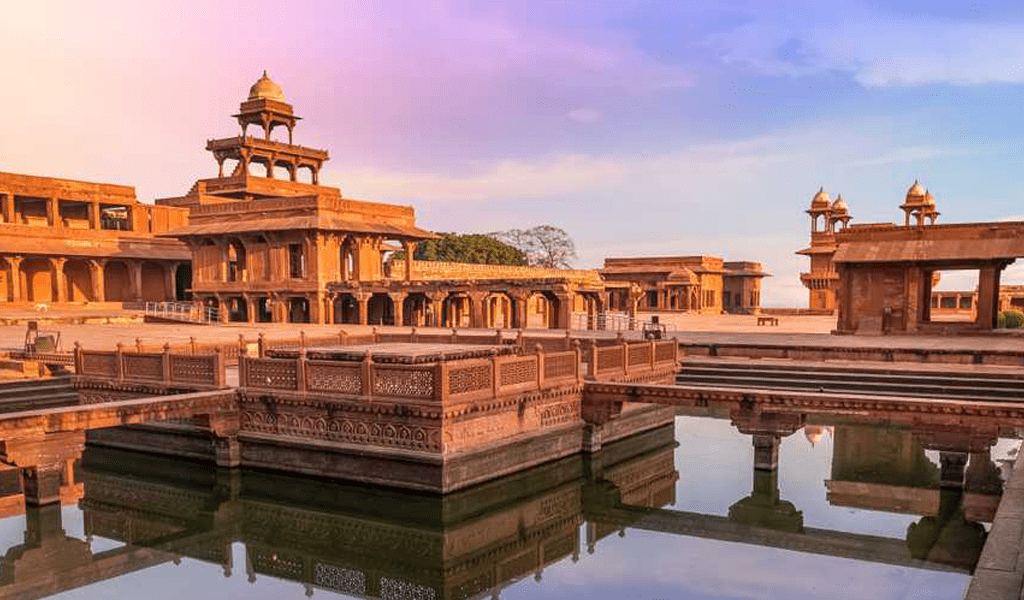
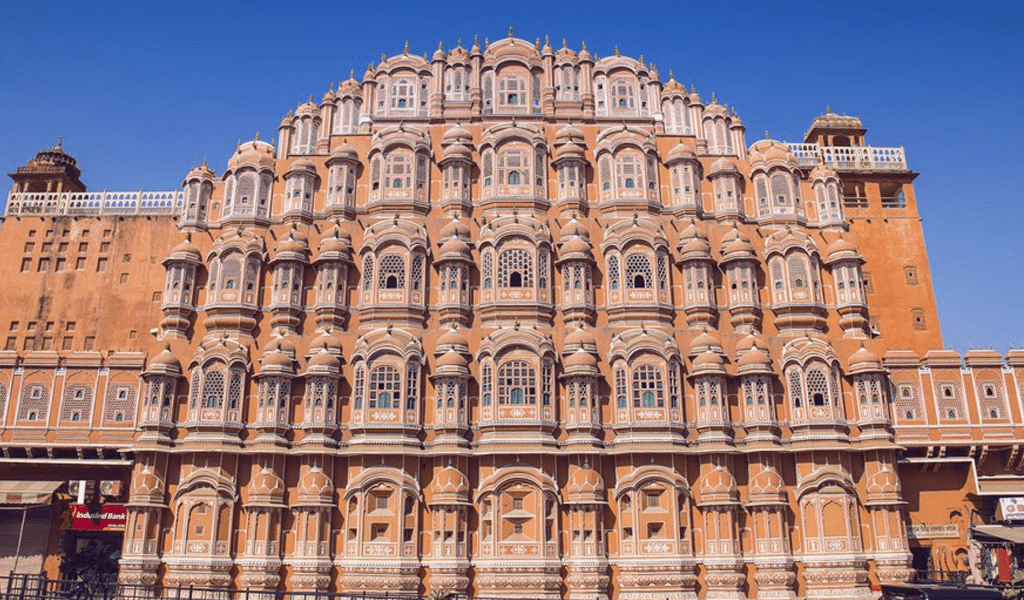
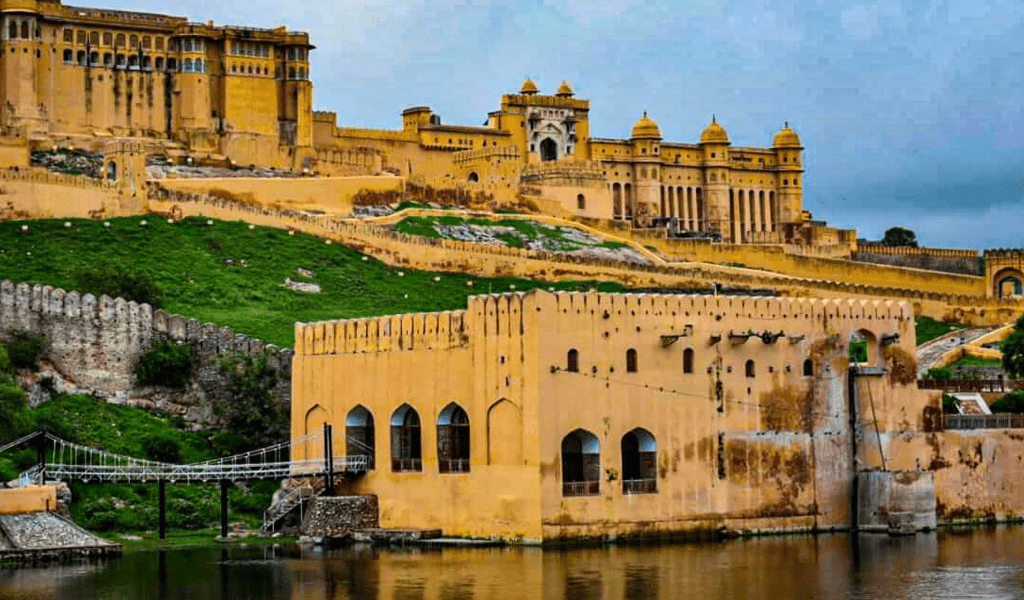
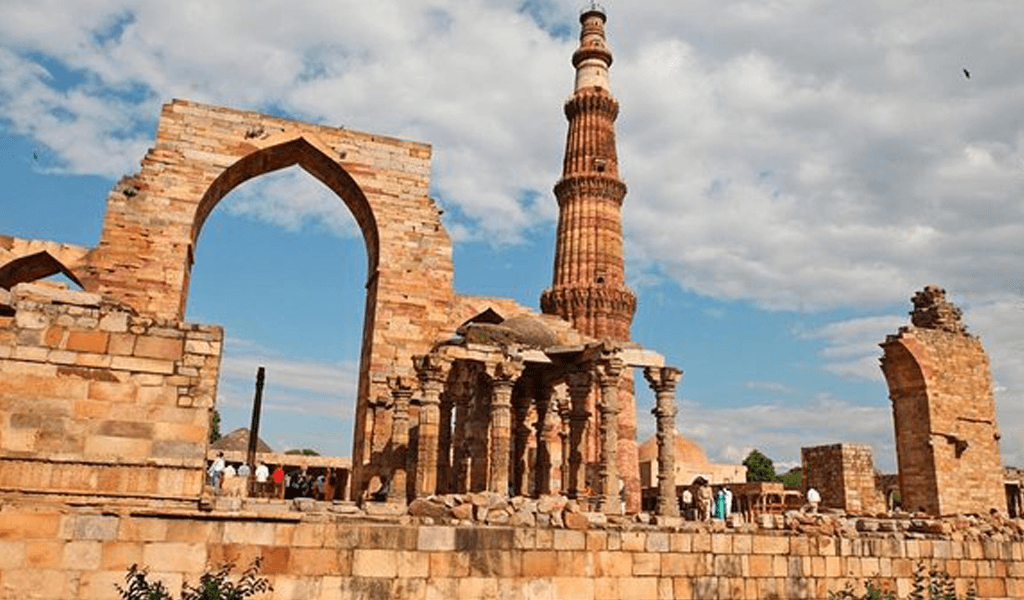
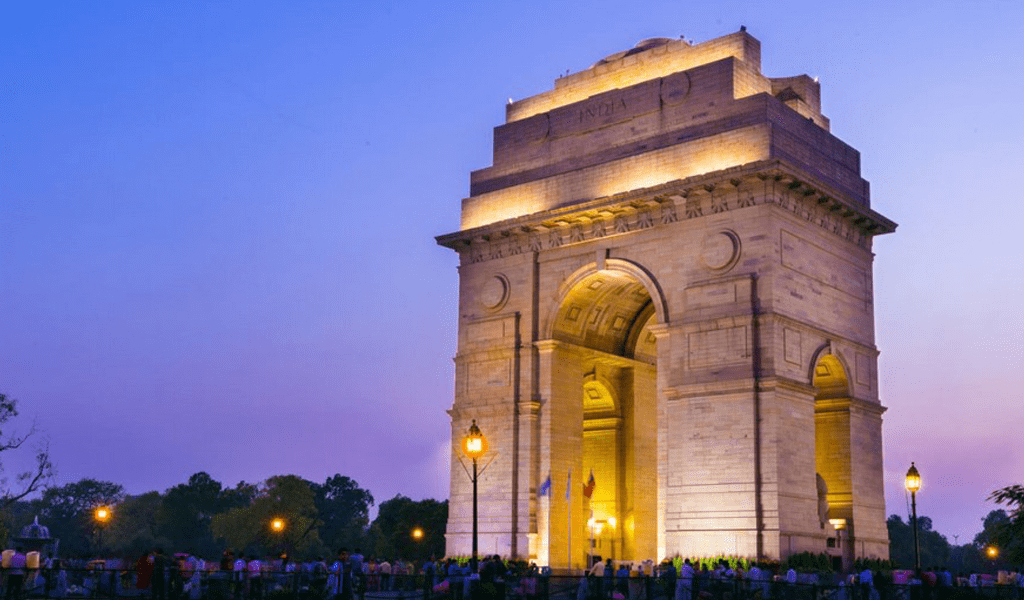
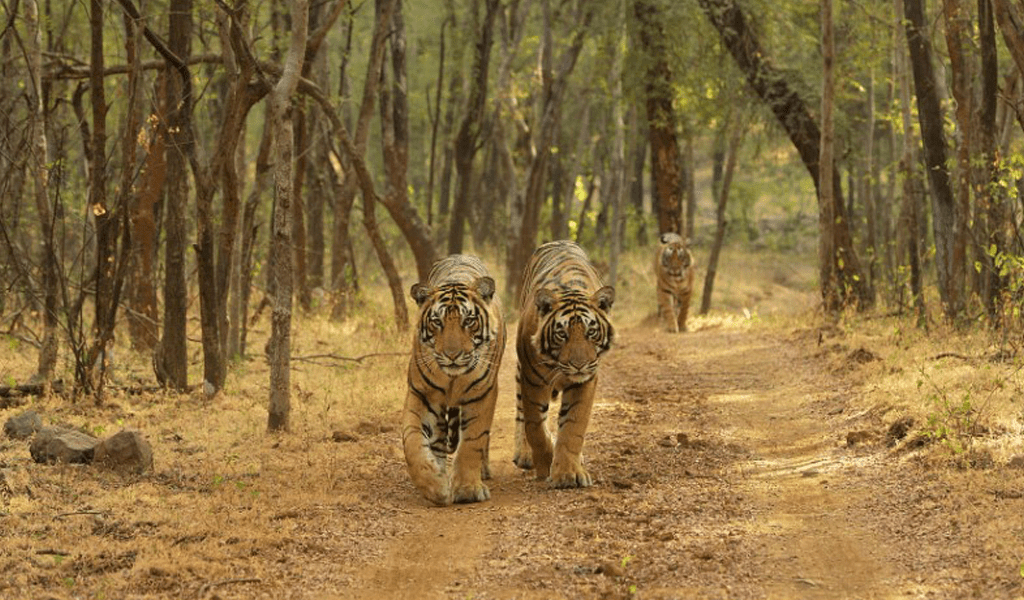
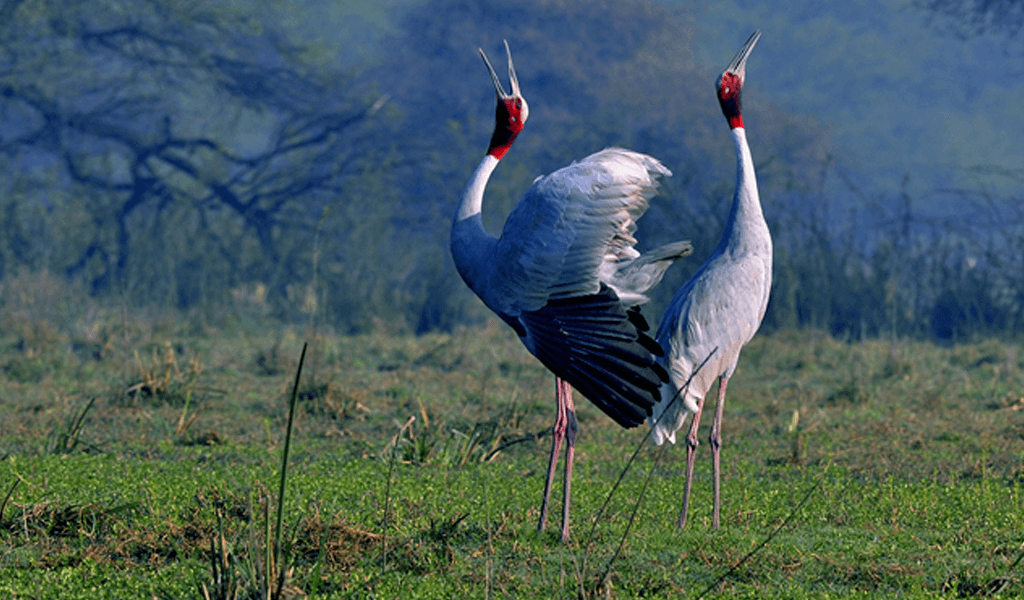
19 Nights & 20 Days
Highlights
- Meet & Assist
- Guided Sightseeing Tours
- Stay in Luxury City Hotels & Wildlife Resorts
- Jama Masjid, Parliament House, Gandhi Memorial, Red Fort, India Gate, Humayun’s Tomb and Qutab Minar-Delhi
- Elephant Safari, Jeep Safari, Wildlife – Kaziranga National Park
- Evening Sunset/Sundown/Dinner Cruise, Kamakhya Temple, Nabagraha Temple, Assam State Museum, State Zoo cum Botanical Garden, Shankardev Kalakshetra and Bashista Ashram – Guwahati
- Dalhousie Square, Raj Bhavan, High Court, GPO, Town Hall, Writer’s Building, Victoria Memorial, Jain Temple, Kali Temple, Howrah Bridge, Marble Palace, Indian Museum & St. Paul’s Cathedral Church–Kolkata
- Boat Cruise, Wildlife, Royal Bengal Tiger – Sundarbans National Park
- Morning & Afternoon Jeep Safari, Wildlife, Tigers – Pench National Park
- Morning & Afternoon Jeep Safari, Wildlife, Tigers – Kanha National Park
- Morning & Afternoon Jeep Safari, Wildlife, Tigers – Bandhavgarh National Park
- Eastern & Western Groups of Temples – Khajuraho
- Jhansi – Agra Train Journey, Battery rickshaw ride at Taj Mahal Agra & Fatehpur sikri.
- Sunrise Visit to Taj Mahal, Agra Fort-Agra & Fatehpur Sikri – Agra
Kaziranga National Park, Guwahati, Kolkata, Sundarbans National Park, Nagpur, Pench National Park, Kanha National Park, Bandhavgarh National Park, Khajuraho, Fatehpur Sikri, Agra, Delhi
You will be met and assisted on arrival at Delhi Airport and transferred to your pre-booked hotel.
Afternoon at leisure to relax.
With old monuments and busy neighbourhoods subtly merging with a vibrant and contemporary cosmopolitan world, Delhi, the capital of India, is a fascinating tourist destination. Poised along the banks of River Yamuna, Delhi, which is almost 1,000 years old, offers a mesmeric mosaic of experiences, both heritage and contemporary. While the former honour the elegant ageing of centuries-old Delhi, the latter reiterate that the capital is the heart of Indian democracy, and can keep pace with the most advanced of the metropolitans of the world.
Overnight stay at the hotel.
Post breakfast, proceed for sightseeing of Old and New Delhi.
Witness attractions like Jama Masjid, Parliament House, Gandhi Memorial, Red Fort and India Gate.
Post lunch, visit Humayun’s tomb and Qutab Minar.
At the end, enjoy a light and sound show at Red fort in the evening.
Overnight stay at the hotel.
Post breakfast, checkout and transfer to Airport for flight to Guwahati.
Meet & assist on arrival in Guwahati Airport and transfer to Kaziranga National Park.
One of the greatest wildlife emblems of India, the UNESCO World Heritage Site of Kaziranga National Park, is famed as a home to two-thirds of the world’s population of the rare one-horned rhinoceros. With the mighty Brahmaputra river lapping at the fringes, the park encompasses wetlands, forests and grasslands, which shelter a sizeable population of tigers as well. Moreover, the park is an abode of world-famous snakes – the rock python, the reticulated python and the king cobra, the longest venomous snake. While eastern swamp deer and wild water buffalo are common sights, if you’re lucky, you can also spot a herd of elephants making their way grandly through the park. The park is surrounded by ancient temples, pristine waterfalls and lush tea estates.
On arrival, check-into wildlife resort.
Overnight stay at wildlife resort.
Early morning, elephant safari in the central (Kohora) range of Kaziranga.
Later return to the resort for breakfast.
Post lunch, exclusive Jeep safari in the western (Bagori) range of Kaziranga.
Overnight stay at wildlife resort.
Early morning, elephant safari in the central (Kohora) range of Kaziranga.
Later return to the resort for breakfast.
Post breakfast, checkout and drive to Guwahati.
Lying on the Southern fringes of the mighty Brahmaputra River, Guwahati, the largest city of Assam, holds spirituality and adventure at its heart. Home to the much-revered Kamakhya Temple, dedicated to goddess Kamakhya, an incarnation of Goddess Sati, the 8th-century temple attracts devotees throughout the year. Apart from temples, river cruising in the feisty Brahmaputra is a magical experience. Guwahati, the city, enjoys a rich bounty of flora and fauna. While its wild side languishes in serenity, the city’s cosmopolitan centre bustles with the vibrancy of festivals, fairs, music, dance and arts and crafts. From the renowned Bihu dance and folk music to the energetic bhortal nritya, the city holds its culture close to its heart and displays it in an array of colours and merriment that leave tourists in awe.
Guwahati was once known as Pragjyotishpura or the Light of the East and is said to have been a powerful kingdom during the days of Mahabharata.
On arrival, check-into the hotel.
Evening enjoy sunset/sundown/dinner cruise in the mighty River Brahmaputra.
Overnight stay at the hotel.
Post early breakfast, checkout and proceed for sightseeing tour of Guwahati, visiting Kamakhya Temple, Nabagraha Temple, Assam State Museum, State Zoo cum Botanical Garden, Shankardev Kalakshetra and Bashista Ashram, dating back to the time when the great sage Vashista visited this spot-on confluence of the Sandhya, Lalita and Kanta stream, and set up his ashram here.
Afterwards, transfer to Airport for flight to Kolkata.
Meet & assist on arrival at Kolkata Airport and transfer to your pre-booked hotel.
The city of joy, as Kolkata is fondly called, holds culture and tradition close to its heart. While it would give any Indian metropolis a run for its money with its grand structures, bustling markets, vibrant culinary scene, exquisite crafts and cultural sites, its historical legacy reigns supreme. Once the capital of British-India, Kolkata’s colonial charm blends with its modern culture.
From slow-moving trams (the oldest in Asia) meandering around the city, racing iconic black and yellow cabs, women dressed in handwoven cotton sarees, antique tea and coffee houses, legendary football clubs and old markets spilling over with products, the bustling metropolis has the laid-back soul of a quaint town.
To get a taste of the times gone by, enjoy the tour that take you through history, spirituality and colonial treks of the city. Gaze in awe at the sprawling Victoria Memorial, a pristine white beauty, as it sits proudly amidst neatly manicured lawns or take a tour of the ancestral home of poet and Nobel laureate Rabindranath Tagore, there are many interesting titbits to mine from the heritage gold of Kolkata.
You can also try culinary trails that will introduce you to some of the most unique dishes you will ever sample. From sweet and spongy rosogolla (a cottage cheese dessert), spicy and sweet water-filled puchka (a savoy) and the delicious daab chingri (prawns cooked in green coconut) to ilish paturi (a type of steamed fish) and kosha mangsho (dry mutton curry), there’s a lot to savour from the Bengali cuisine in the city.
Overnight stay at the hotel.
Post breakfast, proceed for sightseeing tour of Kolkata.
Starting off at Dalhousie Square, visit Raj Bhavan, the High Court, the GPO, the Town Hall, the Writer’s Building, and other important colonial buildings including the Victoria Memorial.
Also see another side of the city, with visits to the Jain Temple, Kali Temple, Howrah Bridge, Marble Palace, the Indian Museum, and St. Paul’s Cathedral Church.
Post sightseeing, return to hotel.
Overnight stay at the hotel.
Post breakfast, transfer to jeety at Sonkhali village with drive through rural landscape of Bengal consisting of villages and colourful markets.
On arrival at Sonkhali jetty, embark on houseboat for cruise to Bali Island in Sundarbans jungle. Cruise through several rivers like the Hogol, Gomor and Gumdi, while enjoying a cup of tea or coconut water. Witness exotic birds and plans, the guide will explain stories of Sundarbans and share information regarding flora and fauna.
On arrival at Bali Island, transfer and check-into to the cottage at jungle camp.
Post lunch at jungle camp, proceed to Sajnekhali and visit the Mangrove Interpretation Center.
On the way back, stopover at Sudhyanakhal watchtower, located inside the Sundarban forest area. The tower provides good opportunity to spot the Royal Bengal tiger. Along with the tigers, different other Sundarban wildlife like axis deers, wild boars, and crocodiles can be spotted from here. There is a freshwater pond near the tower. A variety of animals come to sip water from this pond. So this makes the tower more suitable to catch a closer glimpse.
Dinner and overnight stay at the camp.
Post breakfast, proceed for a thrilling boat cruise on narrow creeks and dense forest through numerous rivers and closely encounter several wild species.
Proceed to the canopied walk at Dobanki and further to Netidhopani, see the ancient excavations and watch a game from the height of the watchtower. You can spot some animals from here, mostly the tigers, as they are in abundance here.
There is a great possibility to witness the Estuarine Crocodiles and the Dolphins of Irrawaddy.
Lunch is served on board and later in the evening return to the camp after watching the beautiful Sun set.
In the evening, enjoy the opera based on the popular myth of the Goddess Bonobibi, performed by local villagers.
Dinner and overnight stay at the camp.
Post breakfast, a short cruise along the narrow canals of Sunderbans to look for wildlife and most probably, The Royal Bengal Tiger.
Post lunch, afternoon at leisure to relax.
Dinner and overnight stay at the camp.
Post breakfast, checkout and embark on the boat to visit the island village of Bali, observe local residents conducting their everyday chores- fishing, weaving and boat.
Afterwards, continue towards jetty at Sonkhali village.
On arrival at jetty, disembark the boat and board the car and transfer to Kolkata Airport for flight to Nagpur.
You will be assisted on arrival at Nagpur Airport and transferred to your pre-booked Wildlife resort at Pench National Park.
With a picturesque vista and a treasure of flora and fauna, Pench Tiger Reserve is an ideal camping site for adventure and wildlife enthusiasts. Some of the fauna you can spot are the royal Bengal tiger, chital, wolf, Indian leopard, gaur, four-horned antelope, sloth bear etc. Furthermore, a great variety of birds like crow pheasant, peafowl, pintail, lesser whistling teal, Indian roller, wagtail, munia, waterfowl, blue kingfisher, crimson-breasted barbet, red-vented bulbul are also found here.
The reserve draws its name from the Pench River that flows through the park from North to South, dividing it into two equal Western and Eastern halves. Out of these, one falls in the Seoni and the other falls in the Chhindwara district. Pench was declared a tiger reserve in 1998-99.
Overnight stay at wildlife resort.
Early morning, jeep safari to Pench National Park.
Return to resort for breakfast.
Post lunch, jeep safari to Pench National Park.
Evening at leisure to relax or enjoy resort facilities.
Overnight stay at wildlife resort.
Post breakfast, checkout and drive to Kanha National Park.
On arrival, check-into wildlife resort.
Home to the majestic royal Bengal tiger, Kanha National Park is spread over a core area of 917 sq km. It is commonly believed that this reserve, with its lush green meadows and thick Sal forests, so enchanted the English author Rudyard Kipling that he used it as background for his iconic novel ‘The Jungle Book’. Kanha also holds the distinction of bringing back the barasingha (swamp deer) from the brink of near extinction. It is also home to other majestic animals like leopard and wild dogs. The award-winning National Geographic film, ‘Land of the Tigers’ was also shot here. The sprawling acres of lush verdant greens of the reserve offer many incredible natural views.
A safari through the reserve where one can sight animals in their natural habitat is indeed an unforgettable experience.
Considered to be one of the best-managed parks in Asia, Kanha Tiger Reserve was created in 1974 as part of Project Tiger. It is known for the stringent conservation programmes to preserve flora, fauna and the local eco-system. During winter months, the park has many migratory birds and hence bird watching opportunities are ample.
Afternoon at leisure to relax, in the evening take a pleasure walk to the nearby forest or enjoy resort facilities.
Overnight stay at wildlife resort
Early morning, a jeep safari to the Kanha National Park.
Being a home to various animals, Kanha is the best destination to spot wildlife.
Later return to the resort for breakfast.
Post lunch, evening jeep safari to the park.
Evening at leisure to relax, or enjoy resort facilities.
Overnight stay at wildlife resort.
Early morning, jeep safari to Kanha National Park.
Return to hotel for breakfast.
Post breakfast, checkout and drive to Bandhavgarh National Park.
On arrival, check-into wildlife resort.
Bandhavgarh, a world-famous tiger reserve where India’s first white tiger was found, is a must-visit. The tiger density here is one of the highest known in India. Bandhavgarh is spread over the Vindhya mountain range and is home to more than 22 species of mammals, 250 species of birds and 70 species of butterflies. It also boasts a variety of vegetation and landscapes of tall grass and thick sal forests. This facilitates the survival of a large range of animals and birds in the forest. Primate species like common langur and rhesus macaque can also be found here. The reserve offers jeep safaris as well as elephant safaris to provide travellers with unique experiences.
Afternoon at leisure to relax, in the evening take a pleasure walk to the nearby forest or enjoy resort facilities.
Overnight stay at wildlife resort.
Morning & afternoon tiger safaris in Bandhav National Park.
There are three key zones in Bandhavgarh tiger reserve and in recent years due to the growth of the tiger population, the chance to see tigers is high in all of them. Client favourites based on history and pedigree tend to be Tala or Magadhi; but Khitoli should not be underestimated. The other wild attractions in the park include Leopards, Blue bulls, Indian Gaur (Bison), Chausingha (Four Horned Antelopes), Spotted deers, Samber deer, Wild boar, Sloth bears fox, Jackals, Wild Dogs etc. There are atleast 22 mammal species and about 250 bird species. The other animals found in Bandhavgarh are Ratel, Porcupine, Small Indian civet, jungle cat and shy hyenas.
Evening at leisure to relax.
Overnight stay at wildlife resort.
Early morning, jeep safari to Bandhavgarh National Park.
Return to hotel for breakfast.
Post breakfast, checkout and drive to Khajuraho.
If stones could speak, the Khajuraho temples would create melodies. Situated in Madhya Pradesh and cradled by the Vindhya mountain range, the heritage town of Khajuraho is famed for being home to the UNESCO World Heritage Site listed temple complex that features Hindu and Jain houses of worship. These temples are famous for their stunning intricate sculptures depicting different aspects of life: spirituality, love, friendship, sports, royalty and most significantly, awe-inspiring art. Based on their geographical location, the temples are categorized into three groups: Eastern, Western and Southern. Believed to have been built in a relatively short period of time spanning over 100 years, i.e. between 950-1050 AD, the complex boasts 22 temple structures that remain from the initial group of 85. Forgotten for centuries, they were rediscovered in the 1850s and restored.
The temples were conceived and built under the rule of the Chandela dynasty. The ornate craftsmanship transforms the life-like sculptures on the temple walls into works of art and is an ode to life, love and joy.
There is an interesting story about how the town got its name. It is said that as the Chandela rulers began constructing the temples, they got the entire area enclosed by a wall. The wall had eight gates flanked on either side by khajur or date palm trees, which are found in abundance in this region. The temples were, thus, called khajura vatika, or bearing khajura.
On arrival, check-into the hotel.
Overnight stay at the hotel.
Post breakfast, checkout and proceed for the Khajuraho sightseeing tour.
Explore the Eastern and Western groups of temples and witness the architectural beauty. Visit Laxmi & Varaha temples, Kandariya Mahadev temple, and Devi Jagdambi temple.
Afterwards, drive to Jhansi Railway station for train to Agra.
Meet & assist on arrival at Agra Railway Station and transfer to hotel.
The city of the Taj Mahal, one of the seven wonders of the world, Agra is a popular tourist destination. Steeped in history, this ancient city is dotted with monuments, architectural wonders and beautifully landscaped gardens, which are remnants of the Mughal reign’s majestic legacy. The city also enjoys a vibrant culinary scene while preserving its exquisite arts and crafts.
Agra finds a mention in the epic Mahabharata, where it is referred to as ‘Agraban’ or an integral part of the Braj Bhumi or the land of Lord Krishna. A lot of significant historical events in the city are said to have unfolded during the reign of Raja Badal Singh, a Sikarwar Rajput king, who is believed to have founded the city in 1475.
Agra transformed into a hub of art, culture, learning and commerce. The city’s lip-smacking food, awe-inspiring monuments, and arts and crafts stand as relics of this illustrious antiquity. Its rich repertoire of arts and crafts has seeped into its modern personality, too: Agra is a haven for crafts like marble and soft stone inlay work.
Overnight stay at the hotel.
Early morning, visit Taj Mahal by the “Rising Sun” – return to the hotel for breakfast.
Taj Mahal, a UNESCO World Heritage Site, it is featured in almost all literature about India and is one of the most enduring images of the country. Its name is believed to have been drawn from the Persian language: ‘Taj’ means crown and ‘Mahal’ means palace, thus making this the palace of the crown. Interestingly, the queen it was built in memory of, originally named Arjumand Begum, held the name Mumtaz Mahal, which meant the crown of the palace. Although it is best known as a symbol of love, a grieving emperor’s ode to his deceased queen, another legend sees the Taj Mahal as an embodiment of Shah Jahan’s vision of kingship. The story goes that he sought to build something akin to heaven on earth, a spectacular, unbelievably beautiful monument that reinforced the power as well as the perceived divinity of the monarch as next only to the Almighty.
It is also widely believed that Emperor Shah Jahan invited artisans from Italy and Persia to work on this marble monument. A fascinating aspect of this structure is that it looks the same from all four sides, except the one that faces the River Yamuna. This side is said to have been especially embellished to serve as the main entrance for the emperor. Shah Jahan would approach the Taj Mahal from the river, aboard a barge, while the entrance used by tourists today served, at the time, as an entryway for soldiers and common people. There are intricate inscriptions on all four entrances, while marble carvings and pietra dura mosaics adorn the walls. Lapis-lazuli, cornelian, mother-of-pearl, agate and emerald are some of the precious gems and stones that were once used in its design. It is said that work on its construction began in 1631. Legend has it that it took 20 years to complete this architectural marvel.
It is also riddled with optical illusions and masterful architectural safeguards. As one first beholds the monument from the main gate, for instance, the Taj Mahal looks large and imposing, but as you move closer, it appears to shrink in size. Also, the minarets surrounding the edifice, while perfectly upright to the naked eye, have actually been constructed to lean away from it so that, should a disaster like an earthquake come about, they would fall away from and not on the mausoleum.
Post breakfast, visit Agra Fort.
Built by Mughal emperor Akbar in 1565 AD, Agra Fort is a majestic sandstone built as an ode to the magnificence of the Mughal Empire. Encompassing within its 2.5-km-long enclosure walls a stunning imperial city, the fortress is shaped like a crescent, its eastern wall flanked by the River Yamuna. It is said that the construction of the fort was originally begun by Emperor Akbar, but completed by his grandson Shah Jahan, who added most of the marble monuments here. There were originally four gates for entrance, two of which were walled up, and only one is open today – the Amar Singh gate.
Agra Fort is widely considered to be a masterpiece of planning, design and construction. Some of its other internal structures include the stunning Moti Masjid, Diwan-i-Khas (hall of private audience) and Diwan-i-Aam (hall of public audience), once home to the legendary Peacock Throne that was eventually taken to Red Fort in Delhi when Shah Jahan shifted his capital there. There are two prominent mosques inside the fort – Nagina Masjid was built by Shah Jahan as a private mosque for the ladies of the court and Mina Masjid is believed to have been built by him solely for his own use.
Afterwards, proceed to visit Fatehpur Sikri.
Mughal emperor Akbar built his capital at Fatehpur Sikri between 1572 and 1585 AD. It was constructed using red sandstone. It is said that the emperor, who wished for a son, went to Sikri to get blessed by sufi saint, Sheikh Salim Chishti. He was soon blessed with a son and was prompted to establish his capital here, building a beautiful mosque and three palaces, one each for his three favourite wives. He named the city Fatehpur Sikri, meaning the city of victory. Not only that, but he also named his son Salim, after the saint who had blessed him.
Later in the afternoon, return to hotel.
Evening at leisure to relax.
Overnight stay at the hotel.
Post breakfast, checkout and transfer to New Delhi International Airport for flight to onward destination.
